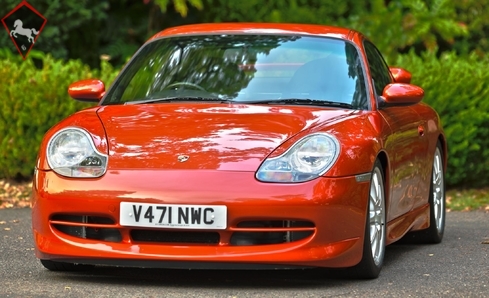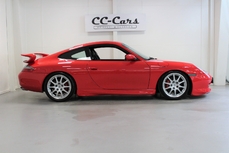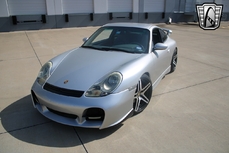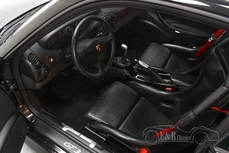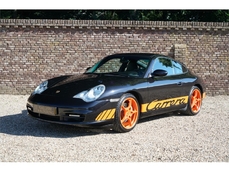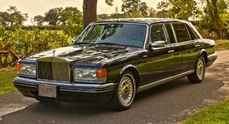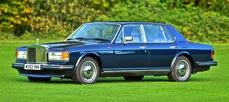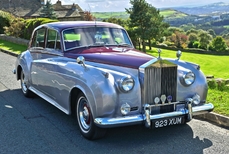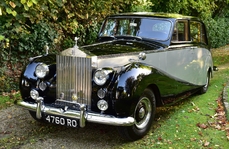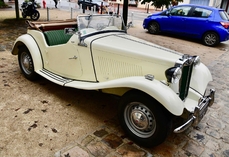Porsche 911 / 966 GT3 1999
Allgemeine Beschreibung :
1999 Porsche 911 GT3 (996)
mileage 70,000
VIN - WP0ZZZ99ZYS690714
This very rare 1999 Porsche 911 GT3 996 comes to us with 60,000 fully serviced miles. Finshed in unmarked Zanzibar Red. With a black leather interior with lots of carbon accents. Sat on four unmarked wheels. The leather is in very good condtion.This is the best 911 996 GT3 we have came across.
The Zanzibar red is simply beauitful.
With the raw 3.5 enigne which puts out 355BHP this 996 GT3 is a real head turner. With a really racing experience of having a Manuel gearbox!
This GT3 has a full service history and has had £1000s spent on looking after it. It has never been tracked.
The Porsche 996 is the internal designation for the Porsche 911 model manufactured from 1997 to 2006. It was replaced by the 997 in 2004.
The 996 had little in common with its predecessor, with the first all new chassis platform since the original 911 and a new water-cooled engine. Technically, it was a major change, a complete breakthrough from the original car other than overall layout.
Development was shared with its entry-level sibling, the roadster-only Boxsterwhich was introduced around the same time, including the front suspension, various interior components, and the engine, all of which were enlarged for the 996. However, the Multi-Link rear suspension, was derived from the preceding 993.
At its debut, the 996 featured the most significant change from the classic 911 series: a water-cooled engine replacing the previously air-cooled engine. Progressively stringent emissions and noise regulations, environmental concerns, a higher expectation for refinement and the need for a high-performance 4 valve per cylinder engine made the switch necessary. Other major changes include a completely new platform having a sleeker body with a more raked windshield, and a re-designed interior along with new "fried egg" shaped headlamps instead of previous "bug eye" headlamps.
The 996 platform was used as the basis for two lightweight GT variants called GT2and the GT3. The GT3 was based on the standard 996 Carrera, but was stripped of a great deal of equipment for weight savings, featuring stiffer, adjustable suspension and upgraded brakes. The GT3 used the bodyshell of the four-wheel-drive Carrera 4, which incorporated additional front-end stiffening. The GT3 was produced in two versions. The first, commonly referred to as the Mk.I GT3, was released in 1999 in all markets, save North America. It featured a naturally aspirated 3.6-litre flat-siex engine generating a maximum power output of 268 kW (364 PS; 359 hp). This engine was shared with the 996 Turbo and was a derivative of the engine developed for the 911 GT1 race car. The Mk.II GT3 variant was based on the second generation of the 996, and featured updated aerodynamics, and a more powerful version of the 3.6L engine from the MK.I, now producing 283 kW (385 PS; 380 hp). The Mk.II was the first GT3 marketed in the North America. An Mk.II GT3 was tested in 2004 and accelerated from 0–97 km/h (0–60 mph) in 4.0 seconds, and produced 1.03 g on the skidpad, the second highest number ever recorded by a street-legal wehicle.
The turbocharged counterpart to the GT3, the GT2, was Rear-wheel drive as well, to save weight and to avoid power losses through the transmission. The GT2 also received an added group of aerodynamic body parts, and twin-turbocharged re-tuned version of the 996 Turbo's 3.6 litre, engine featuring larger turbochargers and intercoolers a revised intake and exhaust system and re-programmed engine control software. The result was 355 kW (483 PS; 476 hp) at 5,700 rpm and 640 N⋅m (472 lbf⋅ft) at 3,500 to 4,500 rpm, enough to launch the car from 0–97 km/h (0–60 mph) in 3.9 seconds and to a top speed of 315 km/h (196 mph). Bigger wheels and tyres along with lightweight ceramic brakes standard. The GT2's fixed rear wing (made of CFRP for the post-2003 cars) appears to be a concession to racing rules that usually outlaw adjustable aerodynamic components. The GT2 had no rear seat and no air conditioning and came with a factory installed roll cage. Both the GT3 and GT2 were available only with six-speed manual transmission.
The Turbo, GT2 and GT3 models use the Aluminum crankcase of the air-cooled 911 with its true dry sump oiling system. The six separate individual Nikasil lined cylinders in this engine are covered with two separately installed water jackets each covering a bank of 3 cylinders on each side of the engine, thus adding water cooling to a crankcase originally designed for air-cooled cylinders (the normal 996 Carrera engine has the cylinders and water jackets cast together with the crankcase).
Ready for a new owner
http://www.vintagerollsroycecars.com/sales/1559/1999-porsche-911-996-gt3/
1999 Porsche 911 / 966 GT3 is listed verkauft on ClassicDigest in Grays by Vintage Prestige for Preis nicht verfügbar.
Fakten der Auto
Karosserietyp : Auto Marke : Porsche Modell : 911 / 966 Ausführung : GT3 Hubraum : 0.0 Modelljahr : 1999 Karosstyp : Rasse/Rallye-Auto Lage : Essex
Verkauft
Angaben Zum Verkäufer
Verkauft
People who viewed this Porsche 911 / 966 also viewed similar Porsche listed at ClassicDigest
Other cars listed for sale by this dealer
über Porsche
Die Geschichte von Porsche ist eine faszinierende Reise von ihren bescheidenen Anfängen zu einem legendären Sportwagenhersteller. Hier ist ein umfangreicher Überblick über die ersten Jahre bis in die neunziger Jahre, einschließlich Models und deren Renngeschichte:Frühe Anfänge:
Gründung und frühe Modelle: Das Unternehmen wurde 1931 von Ferdinand Porsche gegründet und konzentrierte sich zunächst auf Automobilberatung und -design.
Volkswagen Käfer- und Pre-War-Prototypen: Insbesondere Ferdinand Porsche entwarf den Volkswagen Beetle, und in den 1930er Jahren entwickelte das Unternehmen mehrere innovative Rennwagen und Prototypen, wie die Autos der Automineration Grand Prix.
Nachkriegsentwicklung:
Porsche 356 (1948-1965): Das erste Produktionsmodell von Porsche, einem leichten und flinkenden Sportwagen, entwickelte sich durch verschiedene Iterationen, darunter Speedster- und Carrera-Versionen.
Rennerfolg: Der 356 gründete das Rennerbe von Porsche, gewann zahlreiche Rennen und etablierte sich als leistungsorientierte Marke.
Ikonische Modelle der 1960er bis 1990er Jahre:
Porsche 911 (1964):
Dauerhaftes Vermächtnis: Der legendäre 911 mit seiner Layout im Hintermotor hat eine kontinuierliche Entwicklung und bleibt der typische Porsche-Sportwagen.
Varianten und Evolution: Von den frühen luftgekühlten Modellen bis hin zu den moderneren wassergekühlten Versionen hat der 911 erhebliche technische Fortschritte und Modellvariationen erfahren.
Porsche 914 (1969-1976):
Zusammenarbeit mit Volkswagen: Der gemeinsame mit Volkswagen entwickelte Mid-Engine 914 bot einen günstigeren Einstieg in den Besitz von Porsche.
Porsche 924/944/968 Serie (1976-1995):
Vordermodelle: Diese Vordermodelle zielten darauf ab, ein breiteres Publikum anzulocken und ein anderes Fahrerlebnis im Vergleich zum Heckmotor 911 zu bieten.
Rennerbe:
Le Mans und Langurance Racing: Porsche's Racing Heritage umfasst zahlreiche Siege bei prestigeträchtigen Veranstaltungen wie Le Mans, die die Exzellenz und Performance der Marke präsentieren.
Can-Am, Rallying und Touring Cars: Der Erfolg von Porsche in verschiedenen Renndisziplinen trugen erheblich zu seinem Ruf und technischen Fortschritten in der Automobiltechnik bei.
Technologische Fortschritte:
Turbo-Ladung und Innovationen: Porsche löste Pionier in Produktionsautos mit dem 911 Turbo, die modernste Technologie einführten, die die Automobilindustrie beeinflusste.
Advanced Engineering: Im Laufe der Jahre verfeinerte Porsche seine Engineering kontinuierlich und führte Innovationen in der Aerodynamik, Handhabung und Materialien ein.
Abschluss:
Porsches Reise von den frühen Beratungsjahren bis zum Synonym für Hochleistungssportwagen ist geprägt von Innovationen, Rennerfolg und dem legendären 911. Das unerbittliche Streben nach Exzellenz und Rennsport-Triumphien hat den Status von Porsche als einen der verehrten und ikonischen Sportarten festgelegt Autohersteller weltweit.
